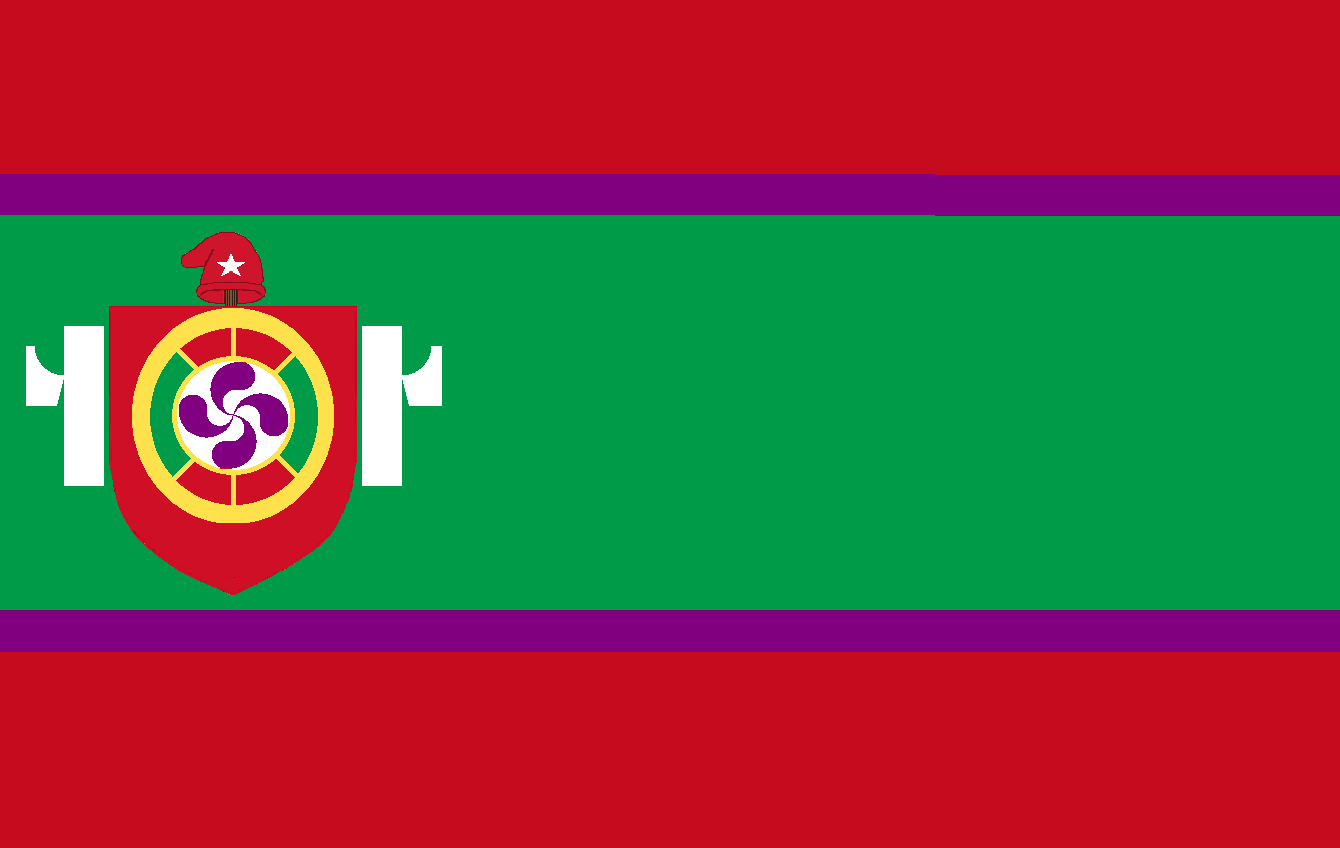Flag of the Vasconic Republic- Banderra Euzkadi Errepublika
The rise of the Visigoths and the Franks would be a major setback for the early Vasconic fiefs. Their holdings along the plains of Aquintaine, close to the Visigothic heartland, were quickly overwhelmed and subsumed. South of the Pyrenees, however, was another story. A more extensive Basque settlement posed a greater challenge for the invaders, allowing the Vascones to maintain their nation even into the Ebro valley.
Vasconic history would be a string of conflicts with the Frankish and Visigothic Kingdoms, but the Vascones managed not only to survive, but to thrive, pushing into Cantabri, and establish rule over most of Aquintaine. With a stronger population base, the Vascones made stronger efforts towards maintaining their languages.
When the Visigoths fell the Vascones would press even further into their former territory, running up against the newly triumphant Arab invaders of the peninsula. Soon enough the Vascones would be, alongside the Asturians, one of the only independent nations on the Iberian peninsula. The first repulsion of the Arabs by Odo the Great in 714 is usually regarded as the beginning of the "Errekonkistaren", or "Reconquest" of the Iberian peninsula.
A dynastic union would see the Vascones united with the Asturians, and when the Vascones would lose much of their holdings north of the Pyrenees to the Carolignians, Vasconia was respun as the "Kingdom of Navarre", taken from the Vascone word for their holdings south of the Pyrenees. Slowly, the Vascones advanced against the Arabs over the centuries, with the Emirate of Andalusia being annexed peacefully in 1355, leaving the Vascones in total control over the Iberian peninsula.
The Ibairienne Empire was one of the Great Powers of Europe, often meddling in the affairs of the French and the Germans, contesting the ethnically Vasconic lands of Aquintaine with the French kingdoms. The Vascones coquered and converted Northern Morrocco, and soon, Vascone pilots were sailing down the coast of Africa, eventually reaching and establishing trade stations in Calicut. Ibairia would discover North and South Bacalhau (named for a Hisapniophone word for Codfish), Hegoldia (taken from the Basque word for south), and even Antartikako.
Ibairia would conquer much of the new world and dominate trade routes, before ultimately being taken down by an alliance of the English, the French and the Germans. A series of colonial revolutions lost them most of their new world holdings, reducing it to Iberia and Aquintaine.
Recently, the monarchy was overthrown by a coalition of radical Vasconic republicans and nationalists, who are impressing their tongue and culture on the minority of French and Hispaniophone speakers. They've raised a new flag, replacing traditional heraldic imagery with fasces, liberty-caps, the traditional six-spoked Vascone wheel and, most prominently, the Lauburu, a traditional symbol of the Basque people and the Askatasuna party that dominates the new Republic.
Knowing that their language is unlike any other in Europe, and possibly the world, the Askatasuna Party espouses all sorts of strange ethnic theories, about how mankind originated in Vasconia, or the ancient Vasconic Soultrean culture settled the Americas, or how the Vascones once lived in all of Western Europe and the entire Mediterranean prior to the expansion of the Aryan-Europeans. There have even been calls to bring this last vision back into reality.
Today, Vasconic is spoken by over 500 million people across the world.




